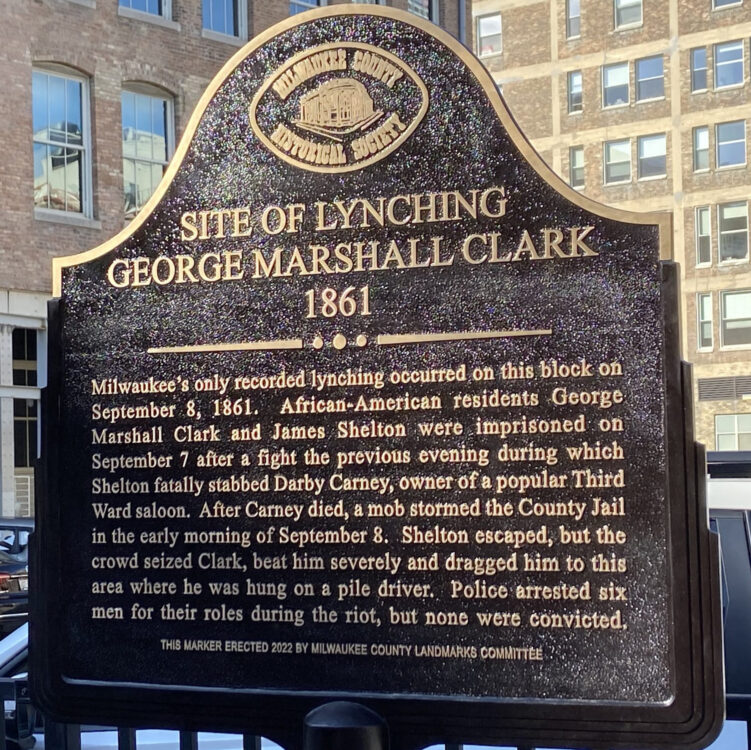Lynching Site of George Marshall Clark Is Dedicated With Official Marker
Share
Explore Our Galleries
Breaking News!
Today's news and culture by Black and other reporters in the Black and mainstream media.
Ways to Support ABHM?
Summary of Milwaukee Independent’s article, “Historical Remembrance: Lynching Site of George Marshall Clark Gets Marker In Milwaukee’s Third Ward.”

On October 11th local officials, area leaders, and community members gathered in the Third Ward of Milwaukee County to honor George Marshall Clark, a victim of racial violence who was lynched on September 8, 1861. The dedication ceremony was organized by the Milwaukee County Landmarks Committee, part of the Milwaukee County Historical Society, and marked a vital step forward in acknowledging the past, promoting social justice, and preserving the memory of George Marshall Clark.
The marker project took nearly six years to complete.
In honoring George Marshall Clark’s life, Milwaukee residents work towards making a better world where such acts like lynching are unthinkable. Randy Bryant, Chairman of the Milwaukee County Landmarks Committee, emphasized the importance of unity, understanding, and the fight against racism.
Melbourne County Executive David Crowley said that by achieving racial equity, the county could become the healthiest county in the state of Wisconsin. Mayor Cavalier Johnson thanked Ken Hanson of Hanson Dodge Creative, who donated the parcel of land for the historical marker to be installed. The Milwaukee Independent began reporting on George Marshall Clark’s story in 2017 and decided to nominate the site where he was lynched in 1861 for designation as a historically significant landmark.
Research about social trauma, particularly with violence against the Black community, has shown that acknowledgment – in the form of historical markers – can be of social and economic benefit. Designating the spot where George Marshall Clark was lynched in Milwaukee County was important for several reasons. Such markers can serve as educational tools to inform the public about the history of racial violence, segregation, and discrimination. They provide an opportunity to teach future generations about the importance of civil rights, social justice, and the ongoing struggle for equality. Markers at lynching sites serve as memorials to the victims of racial violence, providing a space for reflection, remembrance, and healing for the affected communities and the broader public. This preservation of history is essential for understanding the broader context of racial discrimination in the United States.
The installation of the marker on October 11 was part of a broader effort in Milwaukee County and across the nation to confront the legacy of racism and promote social change.
Read the complete article here.
Learn more about George Marshall Clark here and pay your respects to lynching victims at our virtual Memorial here.
For more Breaking News click here.
For more ABHvM galleries click here.









Comments Are Welcome
Note: We moderate submissions in order to create a space for meaningful dialogue, a space where museum visitors – adults and youth –– can exchange informed, thoughtful, and relevant comments that add value to our exhibits.
Racial slurs, personal attacks, obscenity, profanity, and SHOUTING do not meet the above standard. Such comments are posted in the exhibit Hateful Speech. Commercial promotions, impersonations, and incoherent comments likewise fail to meet our goals, so will not be posted. Submissions longer than 120 words will be shortened.
See our full Comments Policy here.